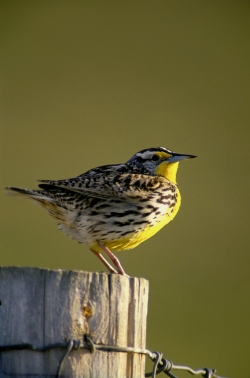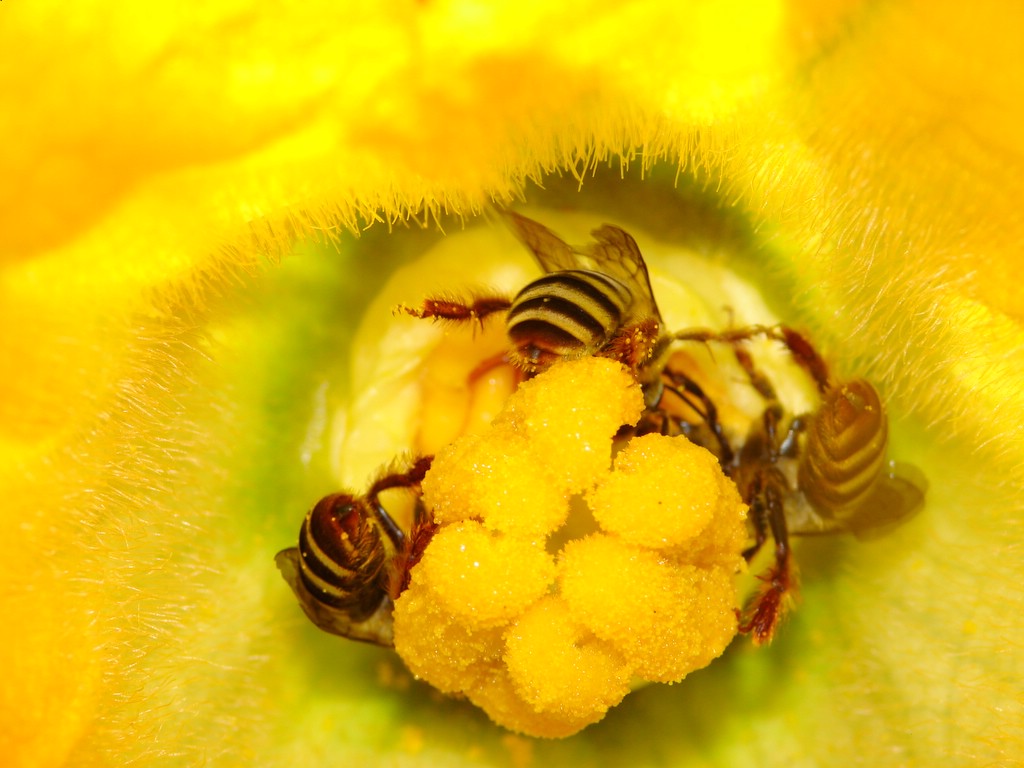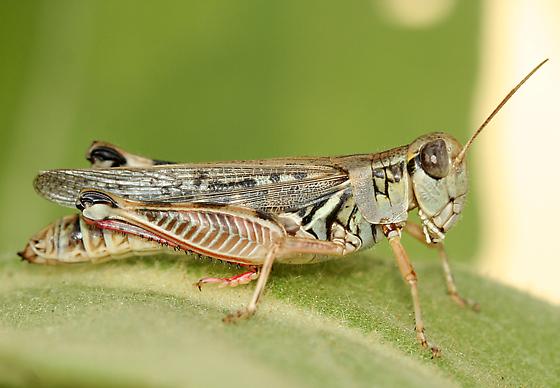
Sturnella neglecta
Courtesy US FWS,
John & Karen Hollingsworth,
Photographers, images.fws.gov
Everyone recognizes bird-watchers by their binoculars. Bird-listening, on the other hand, takes nothing more than your ears, and attention to Nature’s sounds. Listening for bird songs, then, may require your concentration at first, but soon it will become second nature. Some common birds of Utah are more easily found and known by their song than their appearance.
The Canyon Wren is one of my favorites. Its song is unique in North America. This tiny cinnamon-brown bird weighs little more than a marshmallow, but it belts out a cascading song big enough to reverberate off the rocky cliffs and slopes that are its home. You may not see the canyon wren, but try conversing with it by whistling its song in reply. I listen year-round for its song throughout Utah and our neighboring states, particularly in mid-elevation canyons.
Bird song can help you distinguish related bird species too. On the Great Plains, both Eastern and Western Meadowlarks co-occur. The plumage of these two starling-sized species is nearly identical, but their songs differ dramatically. The eastern species sings but a few clear notes, but our western meadowlark sings a beautiful musical warble.

Catherpes mexicanus
Courtesy & Copyright © 2007,
Lou Giddings, Photographer
utahbirds.org
Meadowlarks reside here year-round, typically in grassy areas, pastures and foothills. Their backs are brown, but the male’s chest is a brilliant yellow the color of fall aspen leaves. Males are frequently seen singing atop a fence post. Hearing a meadowlark always makes me smile, they seem so cheery. And that is another reason for listening to birds, for the sheer enjoyment of their song.
In the months to come, we will bring you more of Kevin Colver’s fine bird recordings to enjoy, interpret and learn. These are music lessons that everyone can enjoy!
This is Linda Kervin for Bridgerland Audubon Society.
Credits:
Photos: Western meadowlark, Courtesy US Fish & Wildlife Service (USFWS)
Canyon Wren, Copyright © 2007 Lou Giddings, Utahbirds.org
Recordings: Kevin Colver, https://wildstore.wildsanctuary.com/collections/special-collections
Text: Jim Cane, Bridgerland Audubon
Additional Reading:






